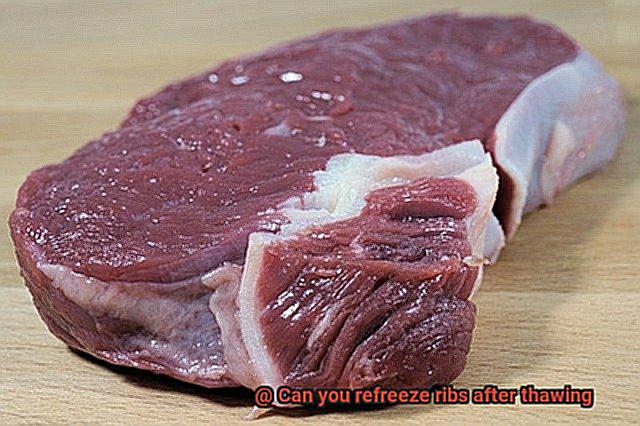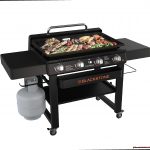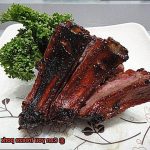Are you a fan of juicy and mouth-watering ribs? Whether you prefer them smoky or tangy, ribs are undoubtedly a crowd-pleaser that everyone loves to indulge in. But what happens when you have some leftover meat or accidentally bought too much to handle?
If you’re wondering whether it’s safe to refreeze ribs after thawing, then we’ve got your back. This is a common question that many home cooks struggle with, and it’s essential to know the right approach to avoid any health risks.
In short, yes, you can refreeze ribs after thawing. However, there are crucial guidelines and rules that one must follow to ensure the food’s safety and quality. It’s essential to understand the science behind food safety and take necessary precautions before putting leftover meat back into the freezer.
In this article, we’ll delve into the nitty-gritty of refreezing ribs after thawing. From understanding shelf life and food safety protocols to tips on preserving the meat’s texture and taste, we’ve got everything covered for you.
So if you want to learn how to safely store your leftover ribs without compromising their quality or taste buds, keep reading.
Contents
What is the Risk of Refreezing Ribs?
While it may seem like a quick and easy solution to save your leftovers for a later date, it’s important to consider the potential consequences of refreezing meat.
One of the biggest risks involved in refreezing ribs is the potential for bacterial growth. When meat is thawed, any bacteria that may have been present before freezing can start to grow again rapidly if it is left at room temperature for too long. Refreezing the meat can allow those bacteria to survive and multiply, leading to potential foodborne illness. Remember, bacteria can double in number every 20 minutes.
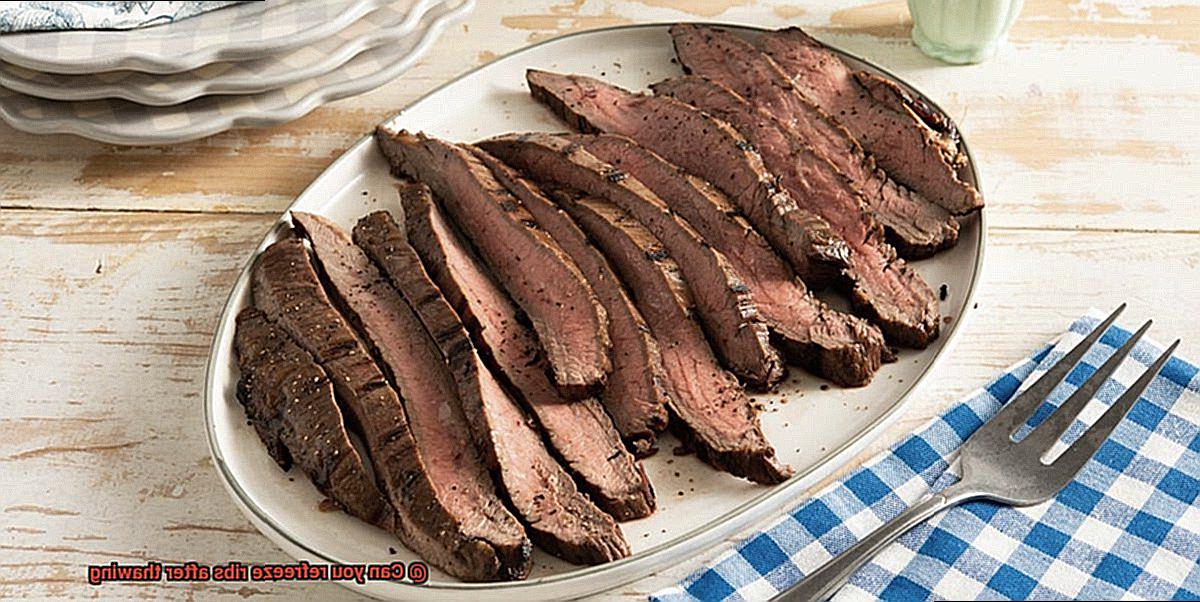
In addition to food safety concerns, there is also a risk of texture and quality loss when refreezing ribs. When meat is frozen and then thawed, ice crystals form within the meat, which can cause damage to the muscle fibers. If you then refreeze the meat, those damaged fibers can break down even further, leading to tougher and less flavorful ribs.
It’s important to note that while there are some situations where it may be safe to refreeze ribs after thawing (such as if they were properly thawed in the refrigerator), it’s always best to err on the side of caution and avoid refreezing meat whenever possible. Instead, cook the ribs right away or store them in the refrigerator for a short period of time before consuming.
To minimize any potential risks involved in handling meat, follow these food safety protocols:
- Always thaw meat in the refrigerator or under cold running water
- Avoid leaving meat at room temperature for more than two hours
- Cook meat to an internal temperature of at least 145°F (63°C) for beef, pork, veal, and lamb
- Store leftovers in airtight containers in the refrigerator and consume within three to four days
What Are the Food Safety Considerations?
Indulging in a plate of succulent ribs is a treat for the senses, but it’s essential to take the necessary food safety measures when it comes to thawing and refreezing meat. As an expert in this field, let me guide you through the key considerations that you should keep in mind.
Firstly, the temperature at which the meat is stored is critical. If it’s thawed and left at room temperature for too long, bacteria can grow, leading to foodborne illnesses that are best avoided. Therefore, it’s crucial to ensure that meat is stored at a safe temperature and not left out for extended periods.
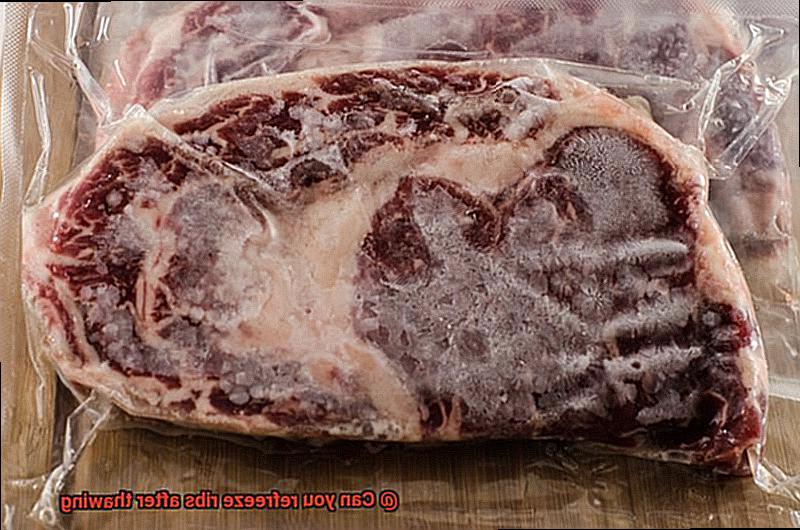
Another factor to consider is the quality of the meat. Refreezing meat can result in a less desirable texture and taste due to the loss of moisture and increased toughness with each thawing cycle. Thus, it’s best to avoid refreezing altogether if possible.
When thawing meat, it’s essential to use safe methods. Thawing meat in the refrigerator overnight is a slow but reliable process that ensures the meat remains at a safe temperature while defrosting. If time is short, cold water or the microwave can also be used, but cooking the meat before refreezing is essential.
Is it Safe to Refreeze Ribs After Thawing in the Refrigerator?
Wonder no more, for I am a food safety expert here to provide you with everything you need to know before making that decision.
First and foremost, it is crucial to note that thawing meat at room temperature is a big no-no. This can lead to bacterial growth and may cause foodborne illnesses, which is certainly something we want to avoid. Instead, opt for safe thawing methods such as refrigeration or cold water. Once your ribs have been properly thawed in the refrigerator, you can generally refreeze them safely as long as they haven’t been sitting out at room temperature for more than two hours.
However, that’s just the tip of the iceberg. The quality of your meat also plays a vital role in whether or not it’s safe to refreeze. Refreezing can lead to the texture and flavor of the meat deteriorating, so it’s best only to refreeze high-quality ribs. If the meat was previously frozen and thawed, there’s a chance that the quality may have already been compromised. So it’s always better to use your judgement when deciding whether or not to refreeze.
To sum it up: while it’s generally safe to refreeze ribs after thawing in the fridge, it is essential to follow proper food safety guidelines. Always use safe thawing methods and consider the quality of your meat before making any decisions. If you’re uncertain about its safety or quality, it’s better to cook the meat first rather than risk foodborne illness.
In conclusion, here are some key takeaways:
- Never thaw meat at room temperature.
- Opt for safe thawing methods such as refrigeration or cold water.
- Refreeze only high-quality ribs.
- Use your judgement when deciding whether or not to refreeze.
- And remember, when it comes to food safety, it’s always better to err on the side of caution.
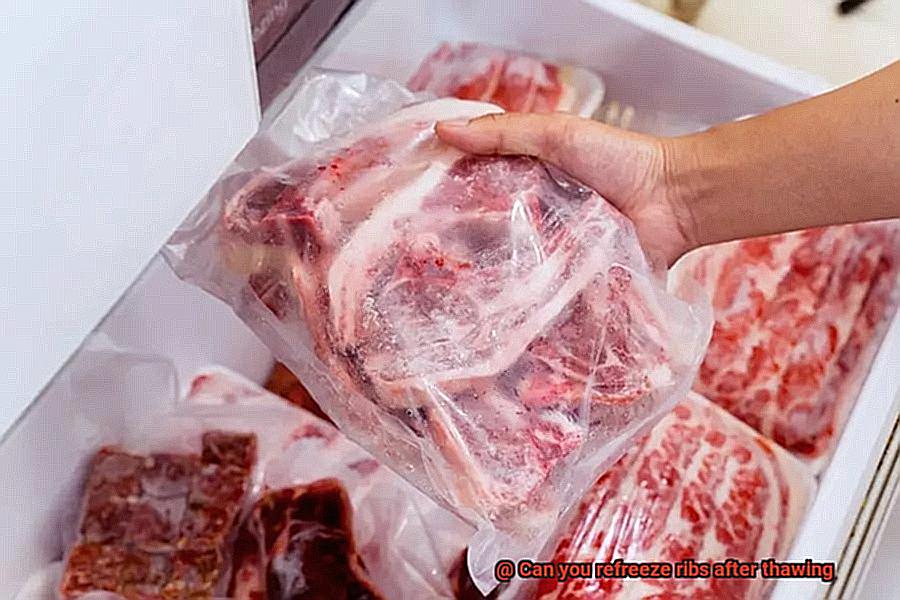
Is it Safe to Refreeze Ribs After Thawing in Cold Water?
As much as we love this delicious dish, it’s important to prioritize food safety. That’s why today, we’re discussing whether it’s safe to refreeze ribs after thawing in cold water.
As a food safety expert, I can tell you that the answer is no, it’s not safe. Why? Well, during the thawing process, any bacteria that may have been present before freezing can start to grow again. And refreezing the meat will allow these bacteria to keep multiplying, which can lead to foodborne illness if consumed.
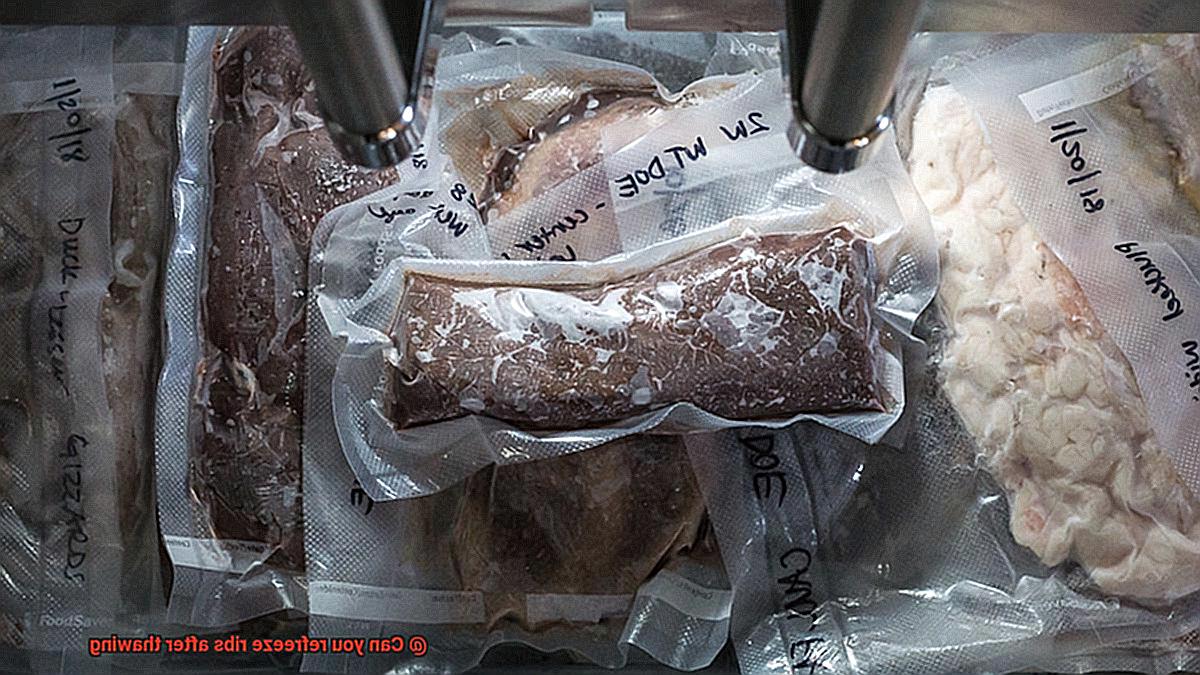
Now, I know many of you are probably thinking, “But I’ve always thawed my ribs in cold water.” And that’s okay – as long as you’re planning to cook them immediately after they’ve completely thawed. However, once the ribs have been thawed in cold water, they should not be refrozen and should be cooked within 1-2 days.
But wait, there’s more. It’s not just about how you thaw the ribs – it’s also important to do it properly. Thawing at room temperature or in warm water can allow bacteria to multiply more quickly, increasing the risk of foodborne illness. That’s why thawing in the refrigerator is the safest method because it keeps the meat at a consistent and safe temperature while it thaws.
To sum it all up: it’s not safe to refreeze ribs after thawing in cold water. Make sure you use proper thawing methods and cook the meat immediately after it has completely thawed to ensure your ribs are safe to eat. Remember, when it comes to food safety, there’s no such thing as being too cautious.
In conclusion, here are some key points to remember:
Refreezing ribs after thawing in cold water is not safe.
Thawing in cold water is okay if you plan to cook the ribs immediately after they’ve completely thawed.
Thawing in the refrigerator is the safest method to thaw ribs.
Cook the meat immediately after it has completely thawed to reduce the risk of foodborne illness.
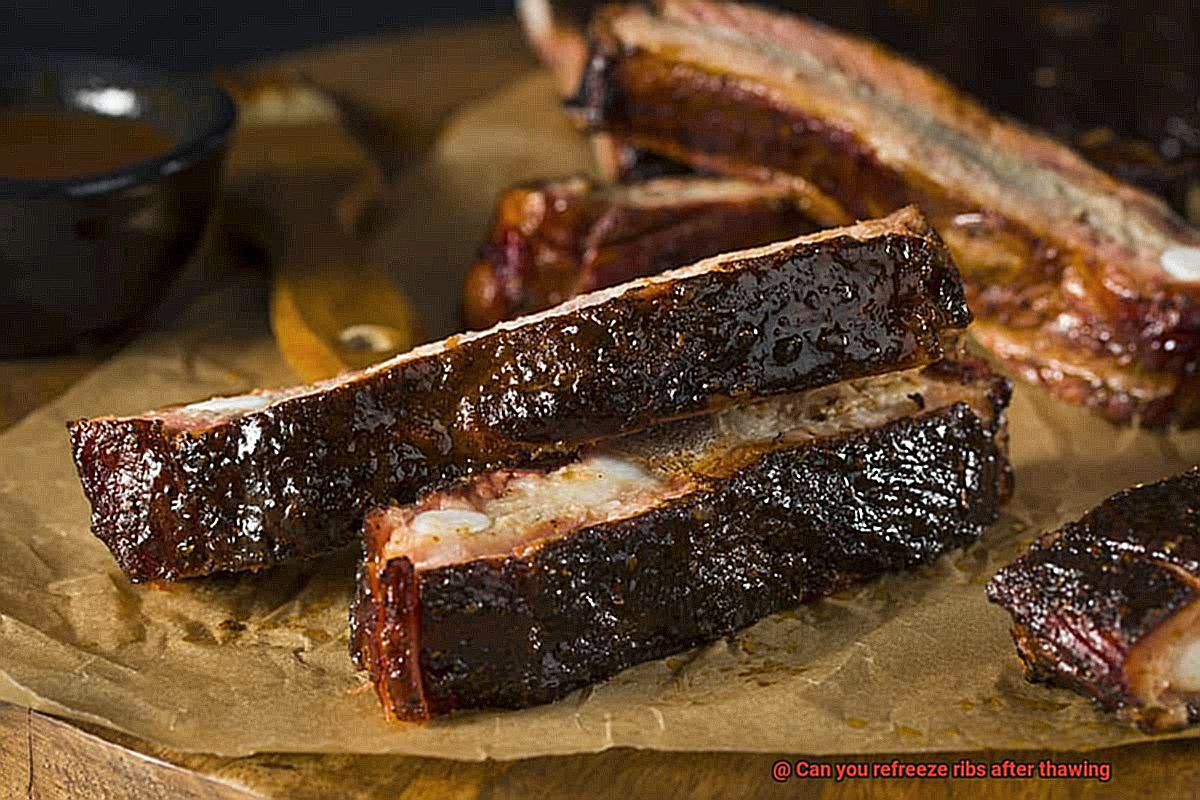
Is it Safe to Refreeze Ribs After Thawing in a Microwave?
One question that often arises is whether it’s safe to refreeze ribs after thawing them in a microwave. Here’s what you need to know.
Microwave thawing is a popular method because it’s quick and convenient. However, it’s important to note that this method can cause uneven heating, which may impact the quality of the meat. Moreover, if the ribs are left at room temperature for too long, they can become breeding grounds for harmful bacteria.
According to the United States Department of Agriculture (USDA), it is safe to refreeze meat that has been thawed in a microwave as long as it was not left at room temperature for more than two hours. This means that if you choose to thaw your ribs in the microwave, you should cook them immediately afterwards. If you need to refreeze them, consider using another thawing method such as placing them in the refrigerator for several hours or overnight.
However, it’s important to be mindful of the quality of the meat. Refreezing ribs that have been previously thawed in a microwave can cause them to become dry or tough due to the loss of natural juices. Therefore, it’s best to only use microwave thawing if you plan on cooking them right away.
To summarize, here are some key guidelines to follow when handling and storing your beloved ribs:
- Thaw ribs in the microwave only if you plan on cooking them immediately afterwards.
- Refreeze ribs that have been thawed in a microwave only if they have not been left at room temperature for more than two hours.
- Consider using other thawing methods if you plan on refreezing your ribs.
- Be aware that refreezing ribs may impact their quality and texture.
How Long Can You Keep Thawed Ribs Before Cooking or Refreezing?
If you’re a fan of mouthwatering ribs, you know how important it is to get them just right. But what do you do when you have thawed ribs that you’re not sure what to do with? Don’t worry, we’ve got you covered.
First and foremost, it’s crucial to know that thawed meat should not be kept in the refrigerator for more than 3-5 days, according to the USDA. This means that once your ribs have been thawed, you should plan on cooking them within three to five days or refreezing them. By following this rule, you can ensure that the quality and safety of your ribs are not compromised.
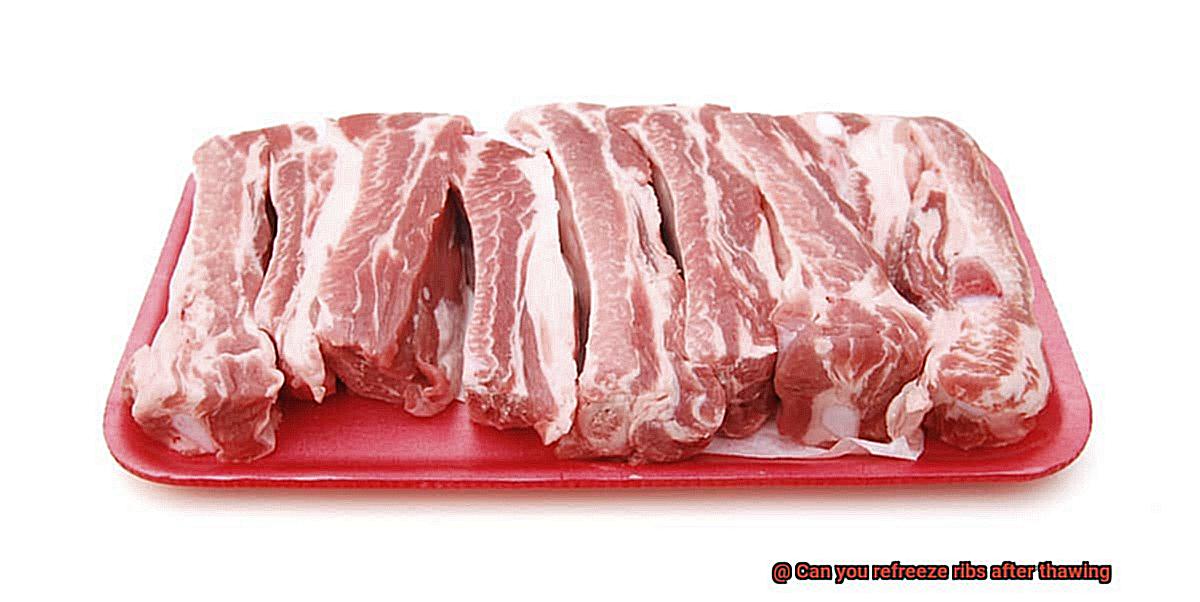
It’s also important to note that each time you freeze and thaw meat, it can affect its texture and taste. Ice crystals form and then melt each time meat is frozen and thawed, which can lead to moisture loss and potential bacterial growth. Therefore, it’s best to limit the number of times you refreeze your thawed ribs.
If you do decide to refreeze your thawed ribs, make sure they have been stored properly in an airtight container or freezer bag. Additionally, only refreeze meat if it has been thawed in the refrigerator and has not been left at room temperature for more than two hours.
To avoid the need for refreezing altogether, consider planning ahead and only thawing the amount of ribs you plan on cooking within a few days. This way, you can ensure that your ribs are fresh and safe to eat while also minimizing the need for refreezing.
In conclusion, whether you prefer baby back ribs or spare ribs, it’s important to take necessary precautions when dealing with thawed meat. Keep in mind the 3-5 day rule and limit the number of times you refreeze your ribs to ensure that they not only taste delicious but are also safe to eat. Happy cooking.
What Changes Occur When Meat is Frozen and Thawed Multiple Times?
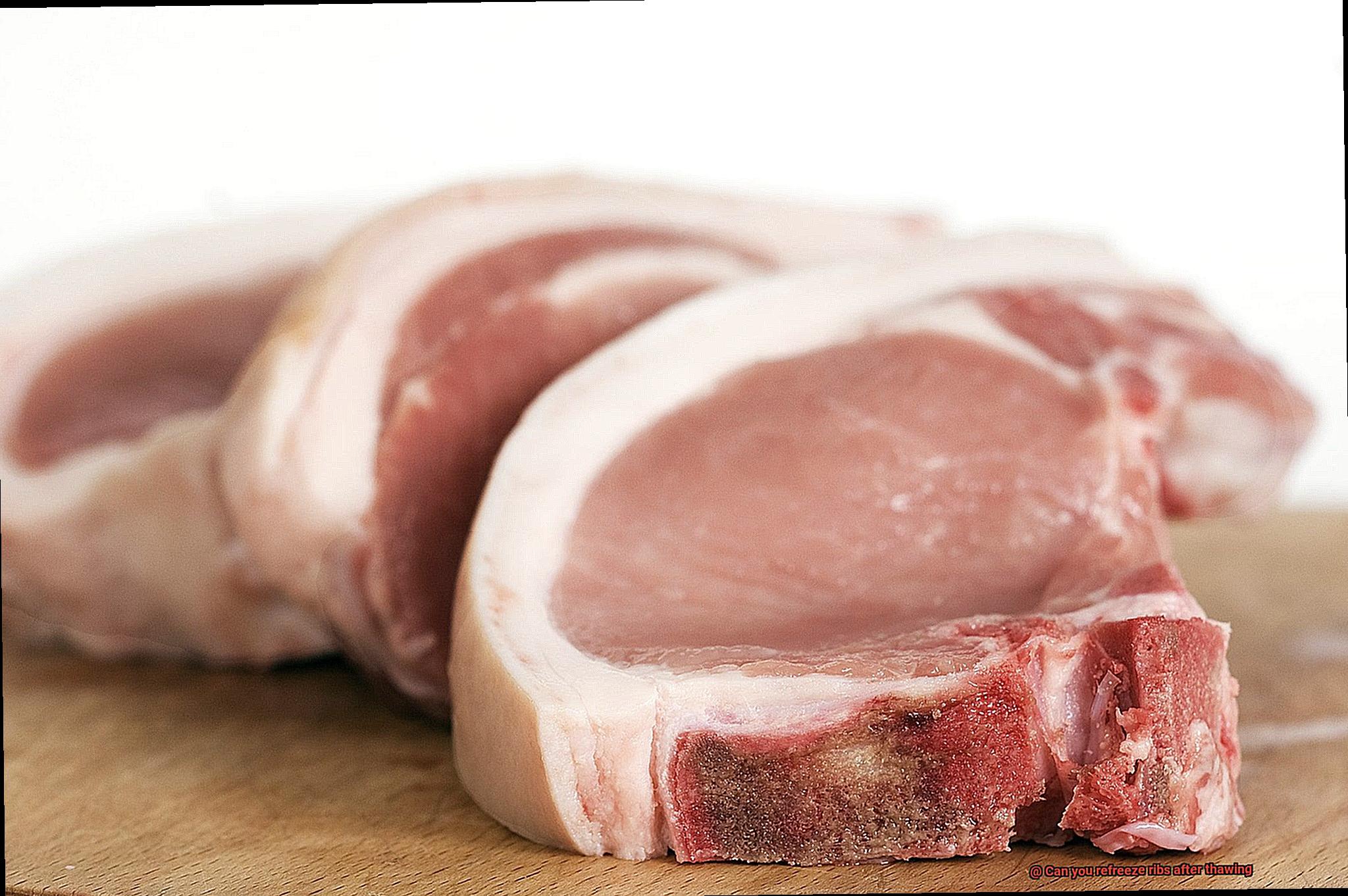
Well, as an expert on this topic, let me tell you that it can lead to some significant changes that can affect your eating experience.
Firstly, when you repeatedly freeze and thaw meat, it can cause a loss of moisture. Every time the meat is thawed, water is released from the cells. This can make the meat dry and tough when cooked. Nobody wants to sink their teeth into a dry piece of meat, right?
Secondly, the ice crystals formed during freezing and thawing can break down the proteins and fats in the meat. This leads to a loss of flavor and overall quality. You want your meat to be juicy and flavorful, not bland and unappetizing.
Thirdly, refreezing meat after thawing it can increase the risk of bacterial growth. When meat is frozen, any bacteria present become inactive. However, they become active again when the meat is thawed. If you refreeze it without cooking it first, any bacteria that have grown during the thawing process will continue to grow when you thaw it again. This increases the risk of foodborne illness.
It is recommended to only thaw your meat once before cooking it to ensure that it remains safe and flavorful. If you do decide to refreeze your meat, make sure to store it properly in an airtight container and only do so if it has been thawed in the refrigerator and not left at room temperature for more than two hours.
To summarize, here are the changes that occur when meat is frozen and thawed multiple times:
- Loss of moisture: making it dry and tough when cooked
- Loss of flavor: leading to bland and unappetizing meat
- Increase in bacterial growth: increasing the risk of foodborne illness
Tips for Successfully Refreezing Ribs
Refreezing ribs after thawing seems like a simple task, but it’s crucial to do it safely and effectively. Here are five tips to keep in mind:
Never refreeze raw meat that has been thawed
Raw meat is a breeding ground for bacteria, and refreezing it can lead to foodborne illness. This means that you should never refreeze ribs that have been thawed in the refrigerator, in cold water, or in the microwave.
Quickly refreeze cooked ribs
If you have cooked the ribs after thawing, then it is safe to refreeze them. However, it is important to do so quickly after they have cooled down to room temperature. This reduces the risk of bacterial growth and keeps the meat fresh.
Divide into smaller portions
Large portions of cooked ribs can take a long time to freeze properly, leading to changes in texture and flavor. To prevent this, it is recommended to divide cooked ribs into smaller portions before freezing. This will allow for quicker and more even freezing.
Label and date
It’s easy to lose track of how long food has been in the freezer, so labeling and dating your refrozen ribs is essential. Generally, cooked meat can be safely stored in the freezer for up to 3-4 months. By keeping track of when you froze them, you’ll know when it’s time to use them up.
Handle properly
When thawing and refreezing ribs, it’s crucial to handle them properly to prevent contamination from other foods in the refrigerator. Thaw ribs in a sealed container or plastic bag, and use airtight packaging when refreezing to prevent freezer burn.
NhExjzBrn4U” >
Conclusion
In conclusion, while it is technically possible to refreeze ribs after thawing, it’s important to proceed with caution to ensure both food safety and quality. Properly handling meat is crucial, so be sure to use safe thawing methods, avoid leaving meat at room temperature for too long, and cook it to the appropriate internal temperature. Refreezing can cause bacterial growth and texture loss, so it’s best to avoid it whenever possible.
However, if you do decide to refreeze cooked ribs, there are a few key steps you should take. First and foremost, divide them into smaller portions and label them with the date of freezing. This will help you keep track of how long they’ve been in the freezer and ensure that they’re still safe to eat. Additionally, remember that cooked meat can be safely stored in the freezer for up to 3-4 months.
When handling meat, prioritizing food safety is essential. By following these guidelines and tips for successfully refreezing ribs, you can enjoy delicious meals without compromising your health or taste buds. So go ahead and fire up that grill – just make sure you’re taking all the necessary precautions along the way.

